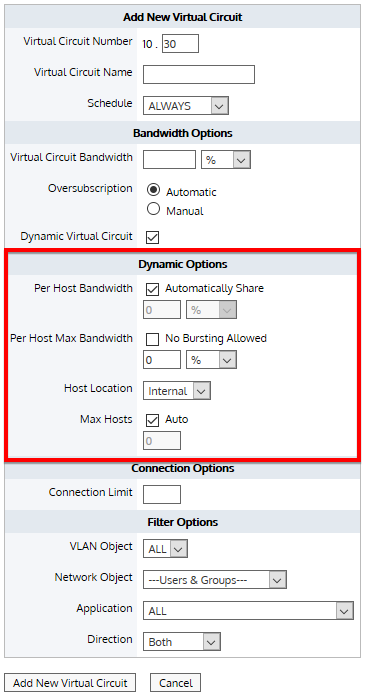Configuring a virtual circuit as a dynamic virtual circuit
When defining a VC, you can configure it as a dynamic virtual circuitlogical definitions that partition a a physical network circuit and used to determine what traffic passes through it and how much (DVC). DVCs have the flexibility to manage the available bandwidth based on the number of active hosts.

The Dynamic Options for a VC
DVCs can either be configured for fair sharing among the hosts, or they can be configured to limit the number of hosts to give those hosts preferential treatment.
For fair sharing, you fix the per host bandwidth and have the system calculate the number of allowed hosts. To limit the number of hosts, you fix the number of hosts and have the system calculate the per host bandwidth allowed to each.
Both methods can limit the number of hosts, but for when there is spare capacity, you can configure the VC to allow bursting when there are less than the allowed number of hosts. The DVC then allows each active host to gain more bandwidth. In the configuration, you set the VC to automatically calculate the per host bandwidth and the number of allowed hosts. The system then assigns bandwidth by dividing what is available to the virtual circuit by the number of active hosts.